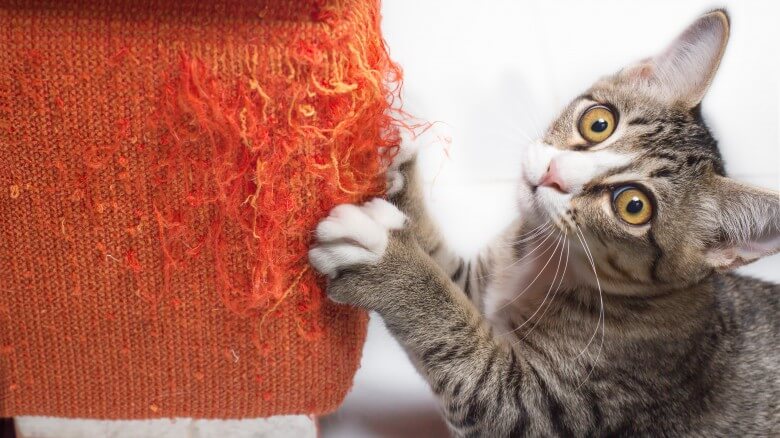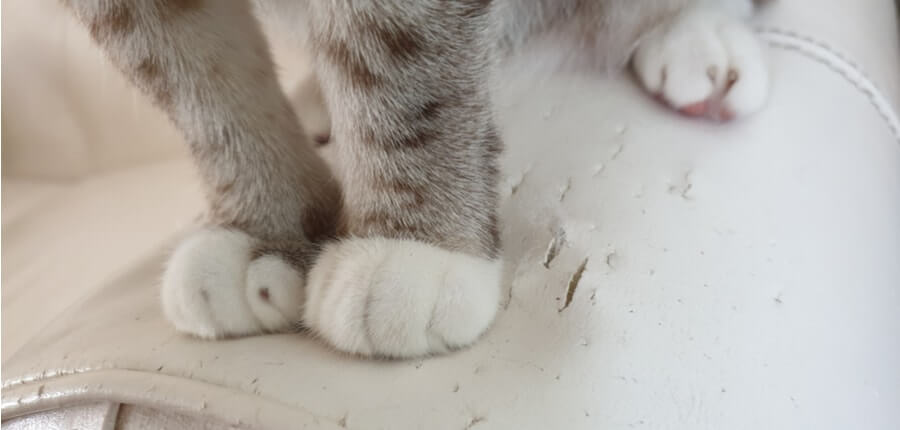
Cats are one of the most common pets around the world. Having a cat companion is very fulfilling but sometimes the cats have some bad habits that are difficult to break Scratching is a normal cat behavior but if it starts to scratch you, other family members, or even your expensive furniture, carpets, and then the key is the intervention, prevention, and redirection.
As a cat parent, if you are experiencing your pet aggressive scratching your skin or furniture then, you should know the reasons behind it. It will help you in understanding your pet and encourage it to a healthier and productive lifestyle.
4 Reasons Why do cats scratch?
There are a number of reasons behind the continuous scratching of the cs. Here are the most common ones:

· Maintenance of claw
Claws are one of the most important parts of cats. The claws help them in preying. Therefore, it is essential for cats to take care of their claws.
Scratching is an inborn nature of the cats that helps in keeping the claws conditioned and sharp. Such playful behavioural changes are a part of their defence mechanism.
The exercise involved in continuous scratching removes the blunt claws and makes them sharper.
· Communication
Communication is another reason behind the continuous scratching of cats. Cats generally knead and scratch different materials to communicate with other cats (Dr. Nicole Fulcher, Animal Medical Center of Mid America).
During scratching the cats leave an olfactory marker or a pheromone with the scent released from a scent gland in paws. This pheromone warns other cats in the nearby area about any possible danger. What an amazing technique!
· Marking territory
Just like dogs, cats also mark their territory. When a cat is scratching the furniture or objects around then they are trying to say that this is their area.
The pheromone is also involved here. This pheromone also says the cats around not to cross the same path.
· Boredom
While most cat parents do not understand this but this is a valid point. If you do not give enough playtime for your cat or dog not then they are more likely to get bored.
In such a situation they transfer their frustration on nearby objects through scratching.
How To Spot The Scratching Behavior Issues?
As we said, scratching is a common problem among cats. A young kitten learns to scratch as a normal part of its development.
These behavioural issues can get worse if you do not train them at the right time. Inappropriate use of teeth and claws is very prominent among untrained feline animals.
How To Differentiate Between Normal & Abnormal Scratching Behavior?

You always find your furniture ruined. The cat often end-up tearing your carpets, sofa, and other nearby objects.
If you have more than one animal at home, then, the untrained cat may scratch the fellow pets in the house.
Your cat is unwilling to accept new visitors at home. They are reluctant to play with them and often scratch the visitors without any reason.
However, you need to keep in mind that, cats often scratch other animals or people if they feel threatened in any way.
So, they grow aggressive behaviour because of the hostile environment around them.
This is why make sure that they are comfortable and are not threatened by anything.
How To Stop Cats From Scratching Furniture?

Obviously, you will be mad at it but you need to keep in mind that, your cat needs training.
Just like kids, if you do not teach the pet from an early au do not teach the pet from an early age, they will be undisciplined and bellicose.
The best way to stop your cats from furniture scratching is to give them cat condos and trees.
These are beneficial in many ways, one of them is it provides a common marking post in the household.
Before investing in an expensive scratching post or designated scratching areas for your cat, ensure that you are catering to the preferences of your feline friend.
There are different types of scratchers. You can give inexpensive horizontal cardboard scratchers for carpet lovers, wedge-shaped ramps for those who love to scratch low on furniture, and trees for those who prefer ‘full body hang’ from claws.
While building or buying, remember the material is also important. Some like natural wood, some like sisal rope.
If you are buying carpet-covered furniture for them then be careful. It is difficult to teach them to scratch ‘this carpet’ not the one in your living room.
Next, when the new furniture arrives at your home, rub catnip on it or dangle their favourite toy from the tops. Such action will encourage the cat to mimic scratching.
Lastly, make sure the new cat furniture is sturdy and able to support the body weight of the cat. If the furniture keeps wobbling then, it will erode the confidence of your cat.
How To Train Yours Kitty?
When the kitty starts to bite or scratch, then, it is more likely they have been encouraged in the past.
In most cases, when they did the same thing in the past, you thought it was cute and did not refrain them from repeating the same action.
It is essential that you do not rough play with them and allows them to scratch at any age. Such a gesture will teach them that, your hands or skins are a toy and they can scratch them anytime they want.
If the cat grows up with such behavioural issues then, it is hard to change it in adulthood.
What to do in such a situation?
Introduce them to various toys and say no if they try to scratch your or your children’s hands. training at an early age helps them to differentiate between hands and toys.
Also, make sure that your family members follow the same guidelines. In this way, your kitty will get a consistent message to not scratch anyone or any furniture.
5 ways to discipline a cat – Ultimate Guide For You To Follow
Discipling an adult cat is difficult but it is not impossible. Here are five techniques that you can follow to discipline the cat.
1. Trim the claws
Trimming with claw clippers, unlike declawing is effective in minimizing the scratching tendency of the cat. Also, it is safe for your cats.
You can trim their claws with claw clippers or sharp human clippers. Do not use scissors and be careful during cutting the nails.
The cats and dogs have veins in their claws unlike human, so if you cut too deep then it can hurt your pet. Ask your vet to show you the proper way of trimming the nail.
2. Yell “Ouch”
You are playing with your cat and it scratches you. Do not keep quiet, rather yell “ouch” loudly and remove your hand from its clutch.
This will show the cat that you are not interested and it hurt you while playing. Do not yank it or the kitten will think the pay is still on.
As a result, they will try to do it again. Rather, gently pull the hands’ ways from the cat’s reach.
3. Redirect attention of the kitten
If the kitty is scratching you continuously then redirecting its attention is very important. Boredom is a major reason behind the continuous scratching or aggressive biting of the kitten. In such a scenario, give them something to play with.
Make sure your kitten active plays for at least 15 minutes with an interactive toy. Teaser toys are great for such training.
You can just use laser light or drag a thread along the carpet that interacts with your kitten. Your cat will chase and pounce on it.
There are some commercially available gloves that come with dangling fingers.
Once you have taught them that your hands or feet are not meant for scratching then you both will enjoy the playing session more.
4. Introduce Favorite Scratching post
Scratching posts or cat furniture is great to keep your cat busy.
You need to teach your cat that they belong to that specific part of the house and they can scratch it as many times as it wants.
Also, at the same time, make sure your cat knows the difference between your bedroom carpet and the cat home carpet.
5. Be patient
Training a pet is quite difficult and it takes a lot of time. Do not lose hope, do not be impatient.
If you and your family members are consistent, your cat will learn gradually.
At the same time, consult with a vet to give you the necessary tips in disciplining your cat.
Conclusion
Kittens and cats love to play and just like the kids, they do not understand the difference between good and bad.
You as the cat-parent need to teach them to behave and check continuously if they are picking up any bad habit or not.



